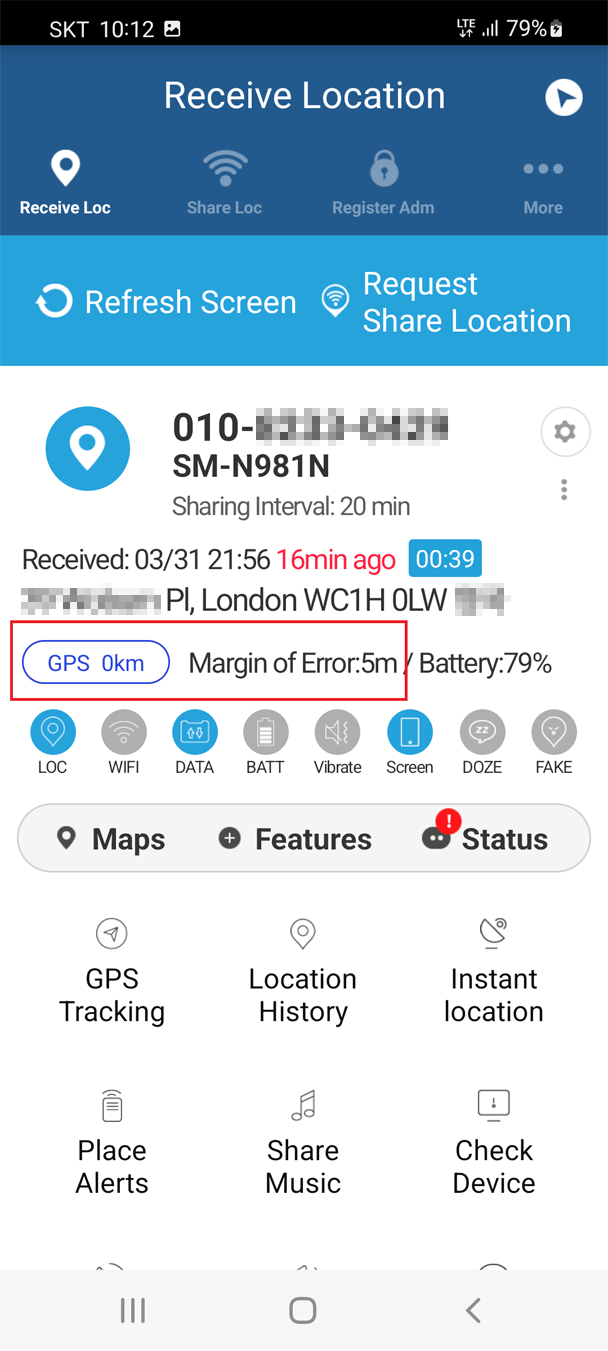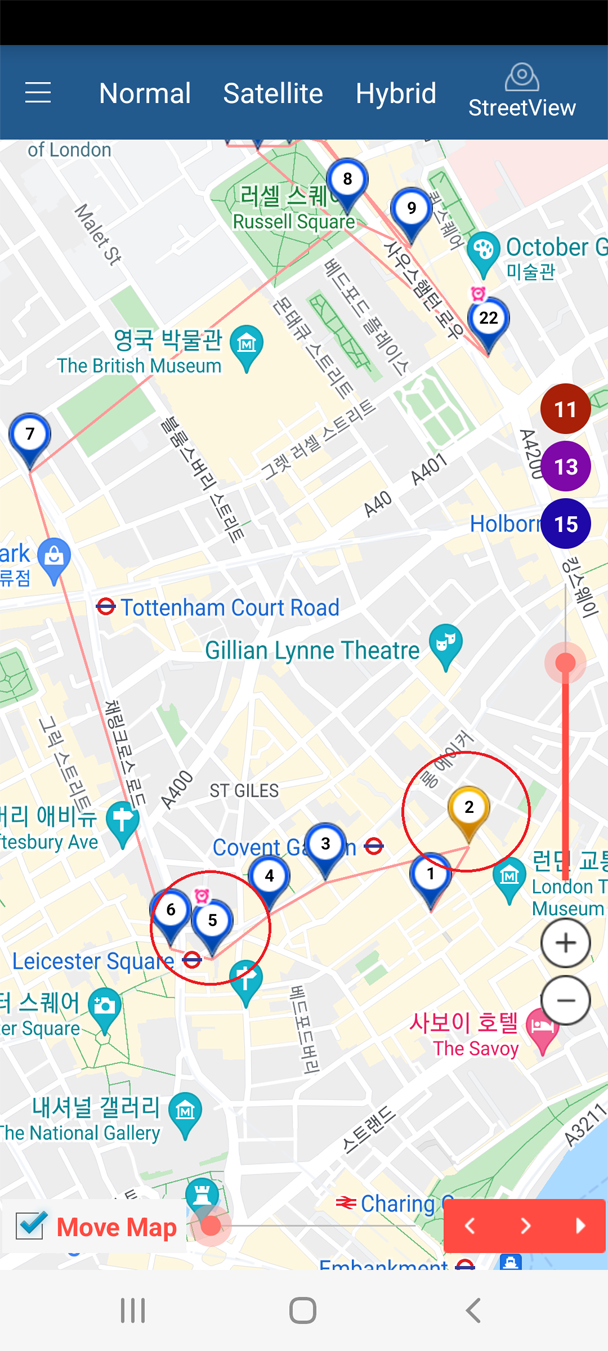★ All locations change frequently depending on radio wave strength, climate, obstacles, and location, and have a margin of errors.
GNALI finds location utilizing GPS, Wi-Fi, or Mobile Network devices.
1. GPS (Outdoor)
- - Icon:
 ,
, 
- - The margin of error is within 1-5m, but when staying in one place for a long time, a margin of error may increase up to 1-100m.
- - GPS is the most accurate outdoors, however, it is inactive indoors. Sometimes GPS works indoors, such as by a window or at a certain point, however it is often inaccurate since it locates the incorrect place due to an insufficient number of satellites.
- - It could take a little longer to find satellites if you haven't received satellite signals for a long time, but once the device locates a satellite, it will find the exact place without any errors.
- - Icon:
2. WIFI (Indoor)
- - Icon:
 ,
, 
- - The margin of error is within 1-30m, but sometimes it points to a location that was used in the past irregularly for a while.
- - WiFi is relatively accurate because locations are received via nearby Wireless AP(routers).
- - Even if you do not have a router at home, the location accuracy is greatly improved if you turn on WiFi because the location of nearby routers is collected regardless of the router connection.
- - Icon:
3. Network (Outdoor/Indoor)
- - Icon:
 ,
, 
- - The margin of error is 1-2 km, however, as we utilize information gathered from base stations that are installed several km apart, errors may occur most frequently. Therefore, please take the mobile network for approximate reference purposes only.
- - Where indoors, locations are tracked by faraway base stations, it may show a pattern of pointing around or pointing away and then return.
- - Wherever within mobile phone coverage, location information is obtained from base stations both indoors and outdoors.
- - Icon:
Selects and notifies the most accurate location.
-
- - GPS allows to locate accurate places outdoors, and WiFi enables to locate relatively exact places indoors where GPS is not detected. When both GPS and WiFi are unavailable, mobile networks (base stations) are used to locate the device, however, it has a slightly greater margin of error.
-
- - When all GPS, WiFi, and Network are available, the most accurate location is selected and notified. Therefore, when it is more accurate GNALI locates you utilizing WiFi or Mobile Networks over GPS even outdoors.
Check Location Tracking Device and Margin of Error
-
[Receive Location Screen] 
[View Map Screen] 
[When Search Location History] 
You can check the color of the icon to see which device is currently used to locate and how large the margin of error is.
If you have actually moved, GPS displays the route in high density.
-
- - If you are notified of a location that cannot be moved within a short period of time, it is possibly an error. When the sender actually moves, the blue positions tracked by GPS in Location History will display the actual route in high density at every Location Sharing Intervals.
[Location History Search Example] 
Sometimes, it can be hard to differentiate if locations displayed far away are actual or errors since the location signal is unstable.
First-time user? Try for a week!
-
- - Please allow from a few days to a week to determine GNALI's accuracy on an average basis, not at a specific point in time. When you are using it for the first time or have not used the location device for a long time, it may take at least a few days for GNALI to collect surrounding information and increase its accuracy.
Worked well before, but now you are experiencing location errors?
-
- - When locations have been accurate for a while but you start to receive location errors more frequently, there might be unnoticeable changes in the surrounding environment. For example, if you went on a business trip or moved, the neighbor's wireless router was changed, or a base station was installed or removed nearby, etc. In these cases, please allow a few days for App to adapt to the changes.
We strive to improve location accuracy with continuous R&D.
-
- - We use the most stable filtering and optimal correction technology with expertise gained from long-term operations and numerous testing.
When inaccurate location notifications occurred repeatedly for several days, please feel free to contact us via the App any time.
We will check various settings and device status, then inform you of the areas that require action.
- - We use the most stable filtering and optimal correction technology with expertise gained from long-term operations and numerous testing.